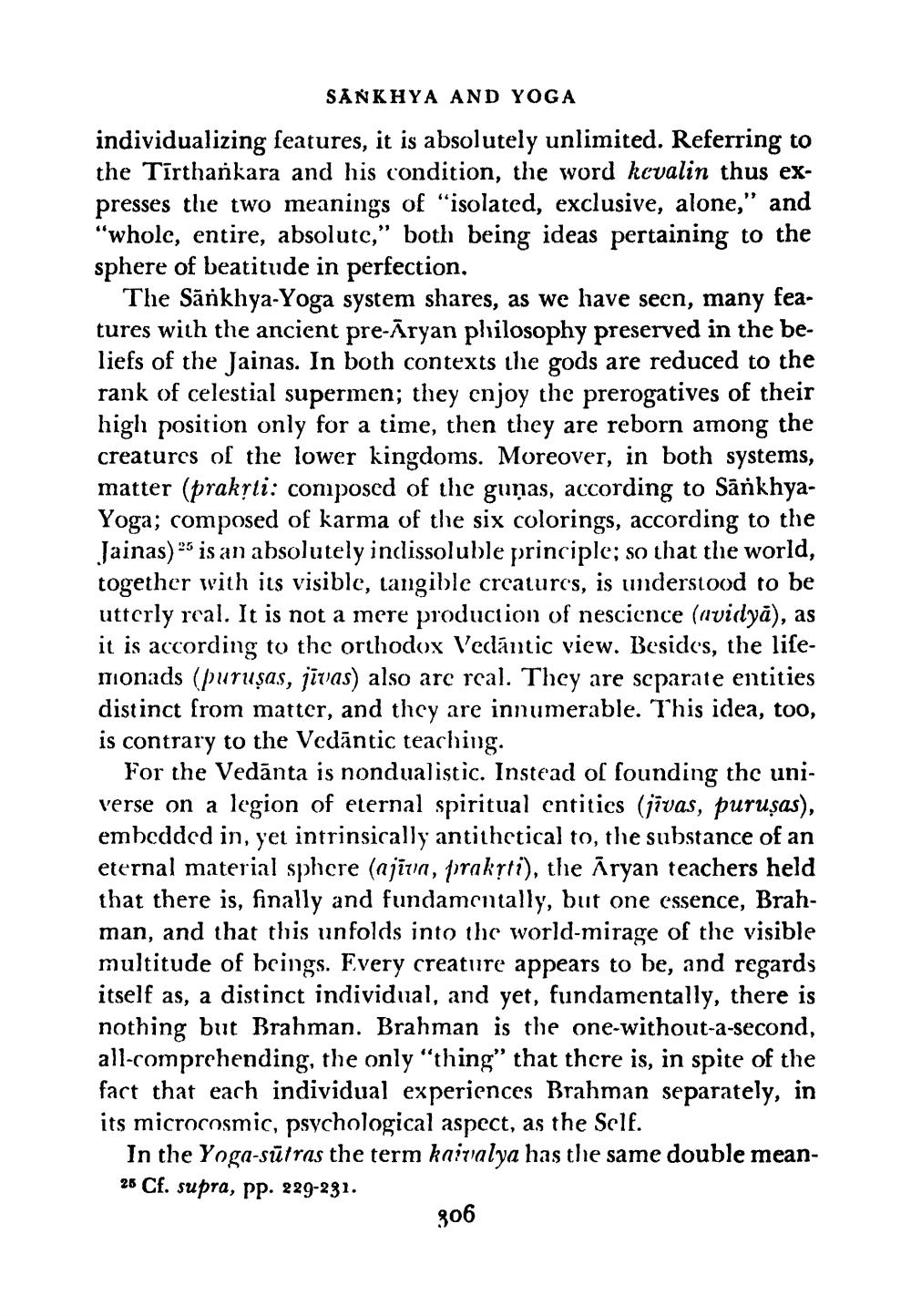________________
SANKHYA AND YOGA individualizing features, it is absolutely unlimited. Referring to the Tīrthankara and his condition, the word kovalin thus expresses the two meanings of "isolated, exclusive, alone," and "whole, entire, absolutc,” both being ideas pertaining to the sphere of beatitude in perfection.
The Sānkhya-Yoga system shares, as we have seen, many features with the ancient pre-Aryan philosophy preserved in the beliefs of the Jainas. In both contexts the gods are reduced to the rank of celestial supermen; they enjoy the prerogatives of their high position only for a time, then they are reborn among the creatures of the lower kingdoms. Moreover, in both systems, matter (praksti: composed of the guņas, according to SankhyaYoga; composed of karma of the six colorings, according to the Jainas) is an absolutely indissoluble principle; so that the world, together with its visible, langible crcatures, is understood to be utterly real. It is not a mere production of nescience (uvidyā), as it is according to the orthodox Vedāntic view. Besides, the lifemionads (puruṣas, jīvas) also are real. They are separate entities distinct from matter, and they are innumerable. This idea, too, is contrary to the Vedāntic teaching.
For the Vedānta is nondualistic. Instead of founding the universe on a legion of eternal spiritual cntitics (jivas, purusas), embedded in, yet intrinsically antithetical to, the substance of an eternal material sphere (ajīva, prakrti), the Āryan teachers held that there is, finally and fundamentally, but one essence, Brahman, and that this unfolds into the world-mirage of the visible multitude of beings. Every creature appears to be, and regards itself as, a distinct individual, and yet, fundamentally, there is nothing but Brahman. Brahman is the one-without-a-second, all-comprehending, the only "thing" that there is, in spite of the fact that each individual experiences Brahman separately, in its microcosmic, psychological aspect, as the Self.
In the Yoga-sūtras the term kaivalya has the same double mean26 Cf. supra, pp. 229-231.
306




